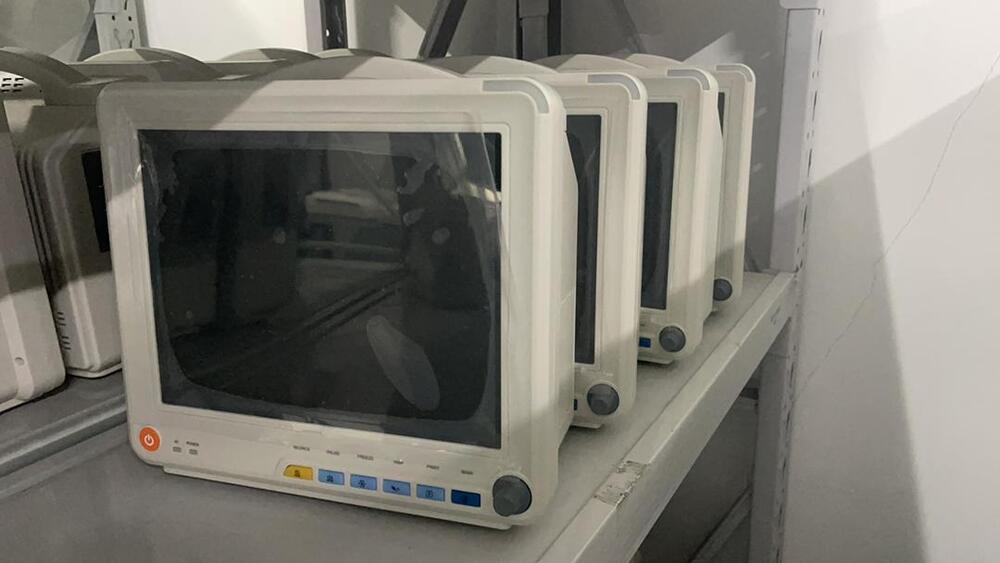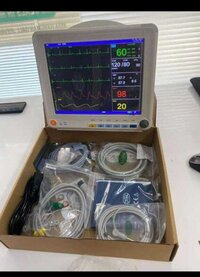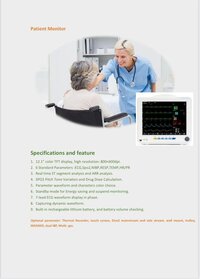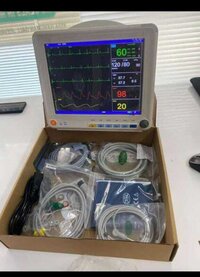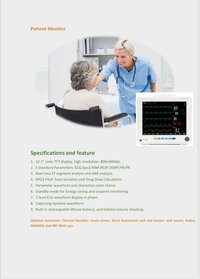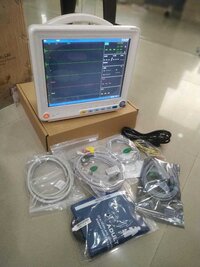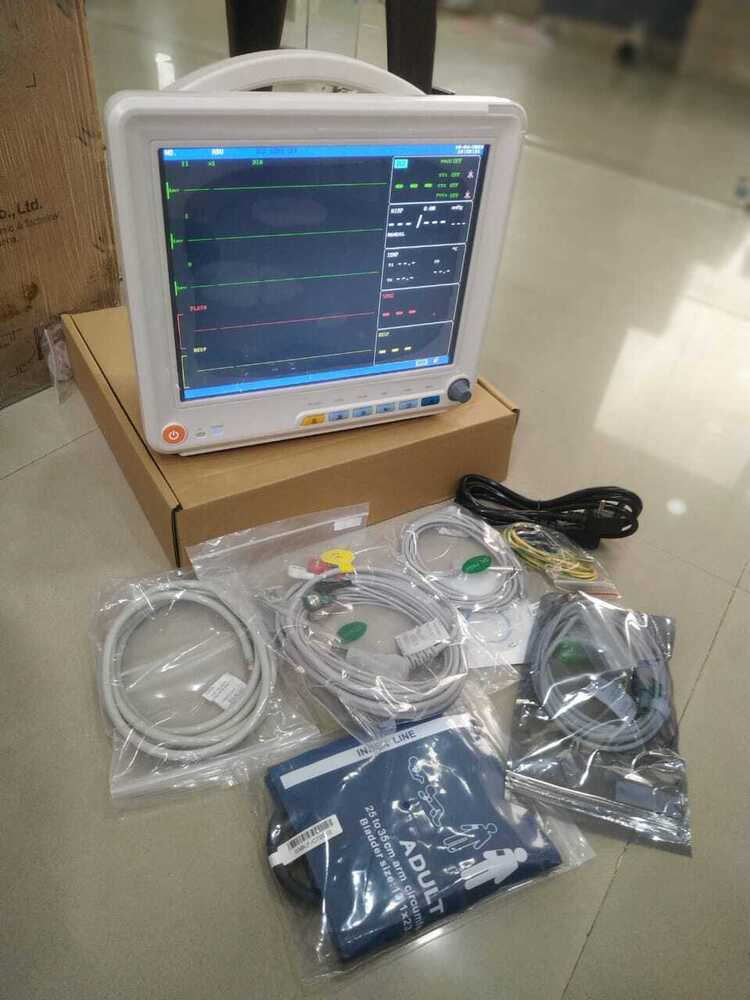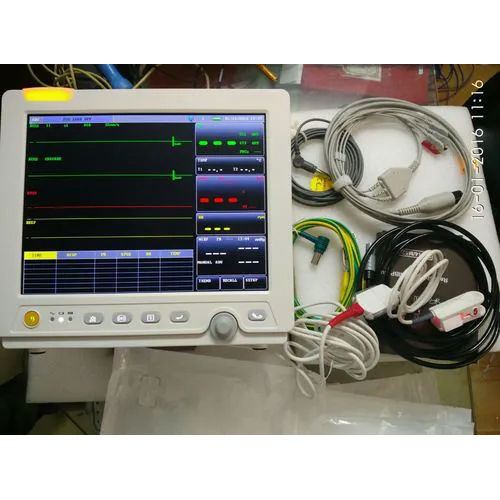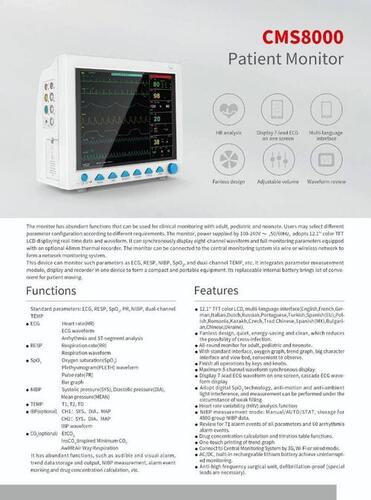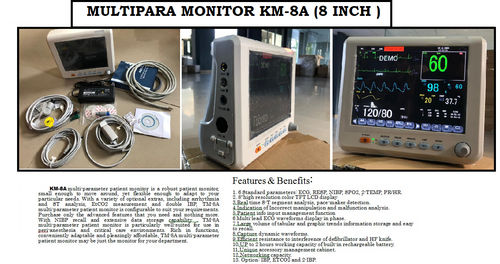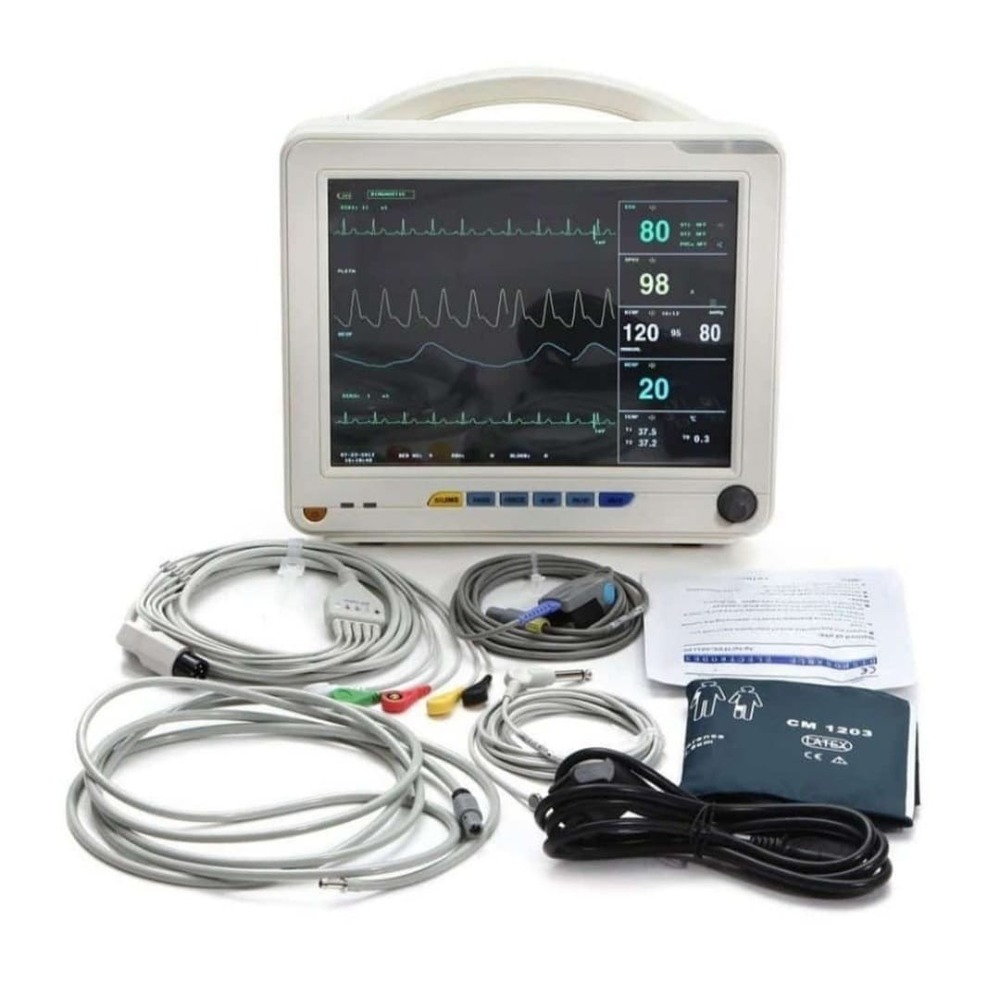MULTIPARA MONITER
Product Details:
MULTIPARA MONITER Price And Quantity
- 18000 INR/Piece
- 5 Piece
MULTIPARA MONITER Trade Information
- Cash in Advance (CID)
- 100 Piece Per Day
- 7 Days
- Asia Australia Central America North America South America Eastern Europe Western Europe Middle East Africa
- All India South India Central India West India North India East India Gujarat Karnataka Kerala Lakshadweep Mizoram Meghalaya Manipur Andhra Pradesh Bihar Chandigarh Daman and Diu Goa Jharkhand Odisha Punjab Assam Delhi Dadra and Nagar Haveli Andaman and Nicobar Islands Arunachal Pradesh Chhattisgarh Haryana Himachal Pradesh Jammu and Kashmir Madhya Pradesh Maharashtra Nagaland Rajasthan Sikkim Tamil Nadu Telangana Tripura Pondicherry Uttar Pradesh Uttarakhand West Bengal
Product Description
A multipara monitor is a medical device used to monitor multiple physiological parameters of a patient simultaneously These monitors are widely used in hospitals and clinical settings especially in intensive care units ICUs emergency rooms and during surgeries to track the vital signs and health status of patients
Here is a general breakdown of the product content or features typically found in a multipara monitor
1 Display Screen
Main Display A large digital screen that shows realtime data from multiple monitoring parameters
Secondary Screens Sometimes used for more detailed views or graphs eg waveform displays for ECG or respiratory rate
2 Vital Sign Monitoring Parameters
Heart Rate HR Monitors the pulse rate usually measured via ECG or pulse oximetry
Blood Pressure BP Displays systolic diastolic and mean arterial pressure MAP typically measured noninvasively via an oscillometric cuff or invasively with a catheter
Electrocardiogram ECG Provides continuous monitoring of the electrical activity of the heart usually with a 3lead or 5lead configuration
Respiratory Rate RR Monitors the number of breaths per minute usually via impedance pneumography or capnography
Temperature Temp Measures body temperature often with an electronic thermometer probe
Oxygen Saturation SpO2 Noninvasive monitoring of blood oxygen levels using a pulse oximeter
EndTidal CO2 ETCO2 Measures the amount of carbon dioxide in the exhaled breath for respiratory monitoring
3 Waveform Displays
Visual representation of physiological signals such as ECG SpO2 and blood pressure waveforms
4 Alarms and Alerts
Audible and Visual Alarms Alerts for outofrange vital signs or other issues such as low oxygen saturation highlow heart rate abnormal blood pressure etc
Threshold Settings Customizable parameters that set upper and lower limits for each vital sign triggering an alarm when those limits are exceeded
5 Patient InterfaceConnectors
Electrode Connectors For ECG leads usually with snap connectors for easy attachment
Pulse Oximetry Probe Connector For SpO2 measurement typically a finger or ear probe
Temperature Probe For measuring body temperature usually attached to the patients skin
NIBP Cuff For noninvasive blood pressure measurements
Capnography Sensor For measuring exhaled CO2 in respiratory patients
6 Data Management and Storage
Data Logging The monitor can store patient data such as waveforms and vital sign trends
Connectivity May include ports or wireless functionality to connect to other hospital systems like Electronic Health Records EHR or central monitoring stations
7 Battery and Power Supply
Rechargeable Battery Allows for portable use of the monitor
AC Power Adapter To connect to a power source when stationary
8 User InterfaceControl Buttons
Buttons for adjusting settings like volume brightness alarm limits and for navigating through different monitoring parameters
Touchscreen Interface Some advanced models have touchscreens for easier navigation and setup
9 Printers and Reports
Printer For generating printed reports of the monitored data for recordkeeping
Data Export The ability to export data to USB drives or via network connections for further analysis or archiving
10 Optional Advanced Features
Invasive Pressure Monitoring For more accurate blood pressure readings especially in critical care or surgical settings
Neonatal Monitoring Some multipara monitors include specific settings for newborns or infants including special probes and lower range parameters
Multiparameter Remote Monitoring Some models enable remote monitoring via network or mobile apps
Tidal Volume TV and Minute Volume MV For monitoring respiratory mechanics particularly useful in intensive care or ventilated patients
11 Calibration and Maintenance Tools
Tools or instructions for calibrating sensors to ensure accurate readings
Maintenance Manual Information for regular service updates and troubleshooting
12 Accessories
ECG Electrodes
Cuff for NIBP
Oximeter Probe
Temperature Probes
Cable management tools
Protective Covers or Cases
13 Compliance and Certification Information
CE Marking FDA Approval Indicates regulatory approval for use in specific regions eg Europe the USA
Safety Standards Such as IEC 606011 for medical electrical equipment safety
14 User Manual
A comprehensive manual detailing the setup operation and troubleshooting of the monitor
Multipara monitors are critical in patient care by enabling continuous realtime tracking of multiple vital signs especially in critical situations They help healthcare providers make quick decisions and intervene when necessary
Let me know if you need more detailed specifications on a particular multipara monitor model

Price:
- 50
- 100
- 200
- 250
- 500
- 1000+
Other Products in 'Multipara Monitror' category
 |
KORRIDA MEDICAL SYSTEMS
All Rights Reserved.(Terms of Use) Developed and Managed by Infocom Network Private Limited. |

 Send Inquiry
Send Inquiry